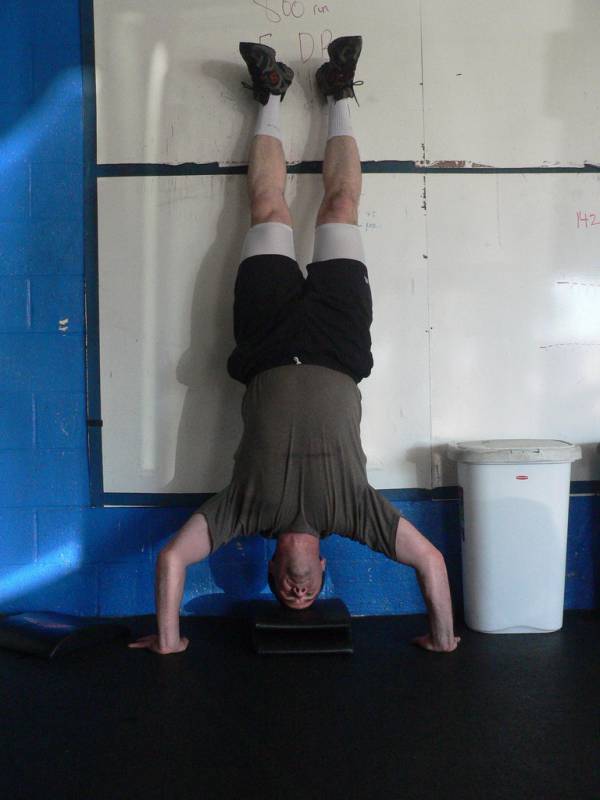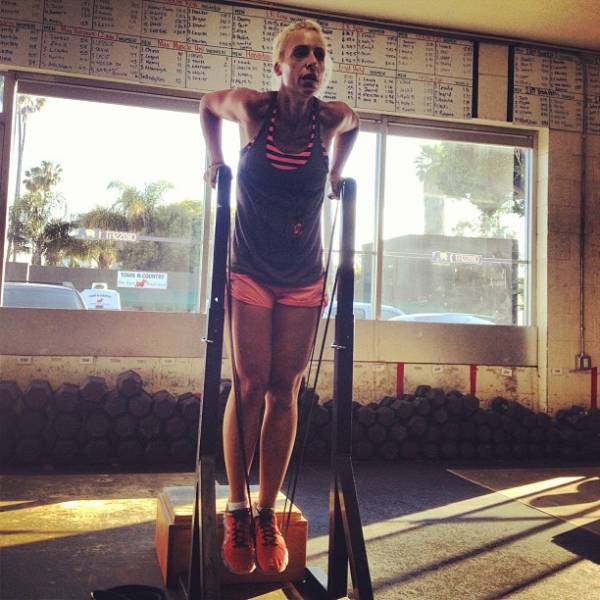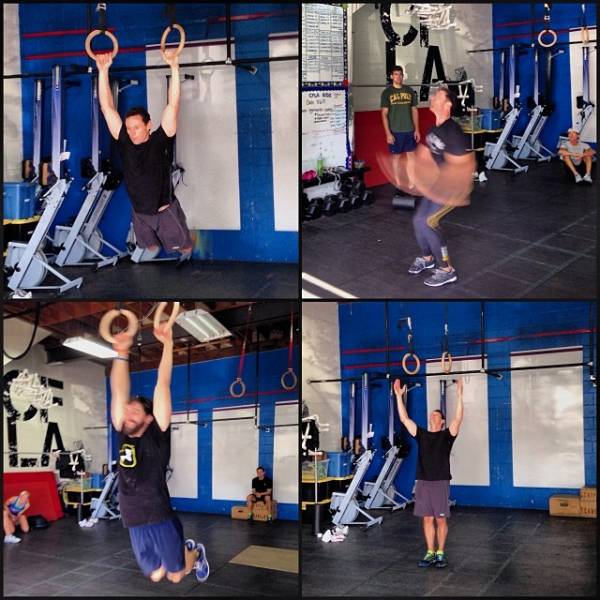As some of you may or may not know, I travel about this blue and green sphere of ours spreading whatever knowledge and information I can through the CrossFit Gymnastics certification. Recently I crunched some quick numbers and estimated that just through the certifications I’ve personally worked, I’m closing in on somewhere around 850 CrossFitters’ worth of gymnastic interaction. This does not include the clients and athletes I previously encountered in the three years of running a large CrossFit box and the thousands of athletes I’ve watched in competition over the last five years. I’m only looking at the group from the certifications because that’s where I have the longest period of uninterrupted observation and coaching of the gymnastic elements present in CrossFit.
Through that mental framing, here are some of the most common issues and misunderstandings I see in regards to gymnastic movement from within our community. These are in no specific order and certainly aren’t items that all are guilty of, but hopefully there will be some piece in here that clicks either for your own training or for your interaction with your clients and athletes.
Issue #1: A Lack of Knowledge of the Human Body and Basic Movement
What I mean by this is, not having a basic understanding of base-level physical terms for body positioning and joint movement. Look, I’m certainly not saying that everyone at your box needs to sound like Stuart McGill, Gray Cook, or Kelly Starrett, but they need some type of rudimentary understanding of the human body’s positions and movements. I would say that at a minimum, people should be familiar with flexion and extension, internal and external rotation, and anterior and posterior pelvic tilt.
Issue #2: Not Being Able to Create Body Positions and Movements
 This piggybacks on the first issue. Not only do you have to know the positions and movement, but you have to be able to create them with your own body. Having those you work with be capable of creating shifts in body position by way of your verbal cueing requires that the clients know what it feels like to fire those those muscles. Whatever terms you want to use with your own clients and in your own coaching is fine, but there needs to be an understanding. Clients and athletes need to know what they should be thinking of or concentrating on to create “X” and how that should feel once it happens. “Tuck your pelvis under,” “Give me more posterior pelvic tilt,“ and, “Imagine trying to pee over your shoulder and behind you,” all accomplish the same goal, but both you and the individual you’re working with need to be on the same page. You need to both have understanding of the terminology you’re using, the desired effect you’re looking for, and how it should feel.
This piggybacks on the first issue. Not only do you have to know the positions and movement, but you have to be able to create them with your own body. Having those you work with be capable of creating shifts in body position by way of your verbal cueing requires that the clients know what it feels like to fire those those muscles. Whatever terms you want to use with your own clients and in your own coaching is fine, but there needs to be an understanding. Clients and athletes need to know what they should be thinking of or concentrating on to create “X” and how that should feel once it happens. “Tuck your pelvis under,” “Give me more posterior pelvic tilt,“ and, “Imagine trying to pee over your shoulder and behind you,” all accomplish the same goal, but both you and the individual you’re working with need to be on the same page. You need to both have understanding of the terminology you’re using, the desired effect you’re looking for, and how it should feel.
Issue #3: Not Having Defined Standards for Movements and Range of Motion
Another common problem I see on a regular basis is clients and coaches not having consistent and clearly defined range-of-motion (ROM) and movement standards. Yes, I understand part of that is the nature of the beast that is CrossFit as a sport and competitive endeavor – continually changing and evolving standards for what constitutes a “good rep” in a given movement. But what I’m referring to is when we ask three different individuals from the same gym what the range of motion requirement for a given movement is and we get three different answers.
 As coaches, we need to realize that competitive exercisers are the minority of our community, and Games-level athletes are a fraction of a fraction of that competitive minority. I’m not particularly concerned with what the ROM requirement for a muscle-up-to-ring-handstand-push-up will be at the 2014 Reebok CrossFit Games as it relates to the demographic that I’m speaking on. What I would like to see is that a gym’s 6:00am class and its 4:30pm class are both looking for the same depth on their dips.
As coaches, we need to realize that competitive exercisers are the minority of our community, and Games-level athletes are a fraction of a fraction of that competitive minority. I’m not particularly concerned with what the ROM requirement for a muscle-up-to-ring-handstand-push-up will be at the 2014 Reebok CrossFit Games as it relates to the demographic that I’m speaking on. What I would like to see is that a gym’s 6:00am class and its 4:30pm class are both looking for the same depth on their dips.
I suggest you sit and talk with all your coaches about the ROM requirements for all the gymnastic movements in CrossFit that you want to standardize for your gym. If you realize you’ve got five or six coaches who have been looking for and requiring different things in a given movement, imagine what that means for the 150 clients spread between five classes a day. If we’re going to compare performance, we need to make sure we’re all competing in the same variants of the same movements. Here’s a starting point if you’ve never thought much about this.
Issue #4: Not Being Able to Maintain Positioning Through a Range of Motion
So now that we’ve talked about ROM, I can finish out by highlighting a piece that ties back into the first couple points: not understanding or being able to maintain proper positioning through a range of motion. Most people can be brought up to speed pretty quickly on basic anatomical positioning cues. If you’re worth your salt, you should be able to create most positions and physical relationships in fairly short order as well. The tricky part once an athlete understands what you’re talking about and can create it within themselves is being able to maintain “X” in a dynamic movement. It’s great that your clients can hit scapular retraction and depression, but can they maintain it during a kipping swing? It’s fantastic that your athletes understand what neutral spinal position is and what it feels like, but can they create and sustain it under load?
 For the most part, these things can become second nature and outside of excessive fatigue should be able to be automatically maintained. However, as a starting point, keep in mind that in regard to positioning, very little is arbitrary. Maintaining the positioning and activation that you’re looking for in a dynamic movement is something that will take deliberate work for most of your clients during their developmental stages. Make sure that you, as the coach and example to your clients, are also not guilty of turning into an anatomical disaster with your gymnastic positioning and movements when they are required to travel through a ROM.
For the most part, these things can become second nature and outside of excessive fatigue should be able to be automatically maintained. However, as a starting point, keep in mind that in regard to positioning, very little is arbitrary. Maintaining the positioning and activation that you’re looking for in a dynamic movement is something that will take deliberate work for most of your clients during their developmental stages. Make sure that you, as the coach and example to your clients, are also not guilty of turning into an anatomical disaster with your gymnastic positioning and movements when they are required to travel through a ROM.
That’s a brief start to some of the big picture items that I see with many coaches, clients, and athletes when it comes to gymnastic movement. If you found value in this discussion, I’d love to go a little bit deeper. We could even start highlighting common individual movement errors and the most productive fixes. If you like this idea, please post to the comments below.
Photos provided by CrossFit LA.






